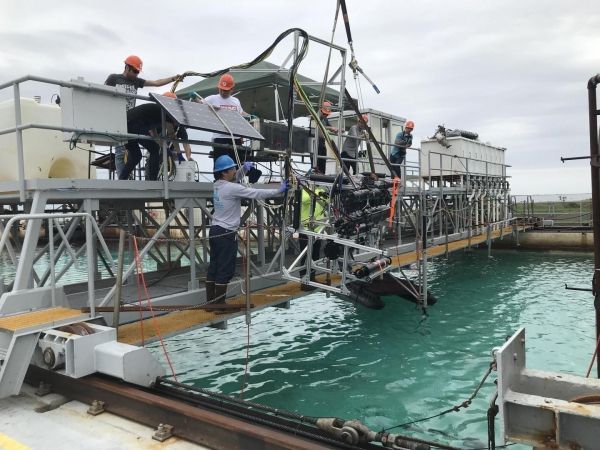In a 600-ft.-long saltwater wave tank on the coast of New Jersey, a team of NJIT researchers is conducting the largest-ever simulation of the Deepwater Horizon spill to determine more precisely where hundreds of thousands of gallons of oil dispersed following the drilling rig’s explosion in the Gulf of Mexico in 2010.
Led by Michel Boufadel, director of NJIT’s Center for Natural Resources (CNR), the initial phase of the experiment involved releasing several thousand gallons of oil from a one-inch pipe dragged along the bottom of the tank in order to reproduce ocean current conditions.
“The facility at Ohmsett allows us to simulate as closely as possible the conditions at sea, and to thus observe how droplets of oil formed and the direction and distance they traveled,” Boufadel said.
Later this summer, his team will conduct the second phase of the experiment, when they will apply dispersants to the oil as it shoots into the tank to observe the effects on droplet formation and trajectory.
Read more at: New Jersey Institute of Technology
A team of New Jersey Institute of Technology (NJIT) researchers is conducting oil dispersion experiments at the 600-ft.-long salt water wave tank at the US Department of the Interior's Ohmsett facility on the Jersey Shore. (Photo Credit: NJIT)


